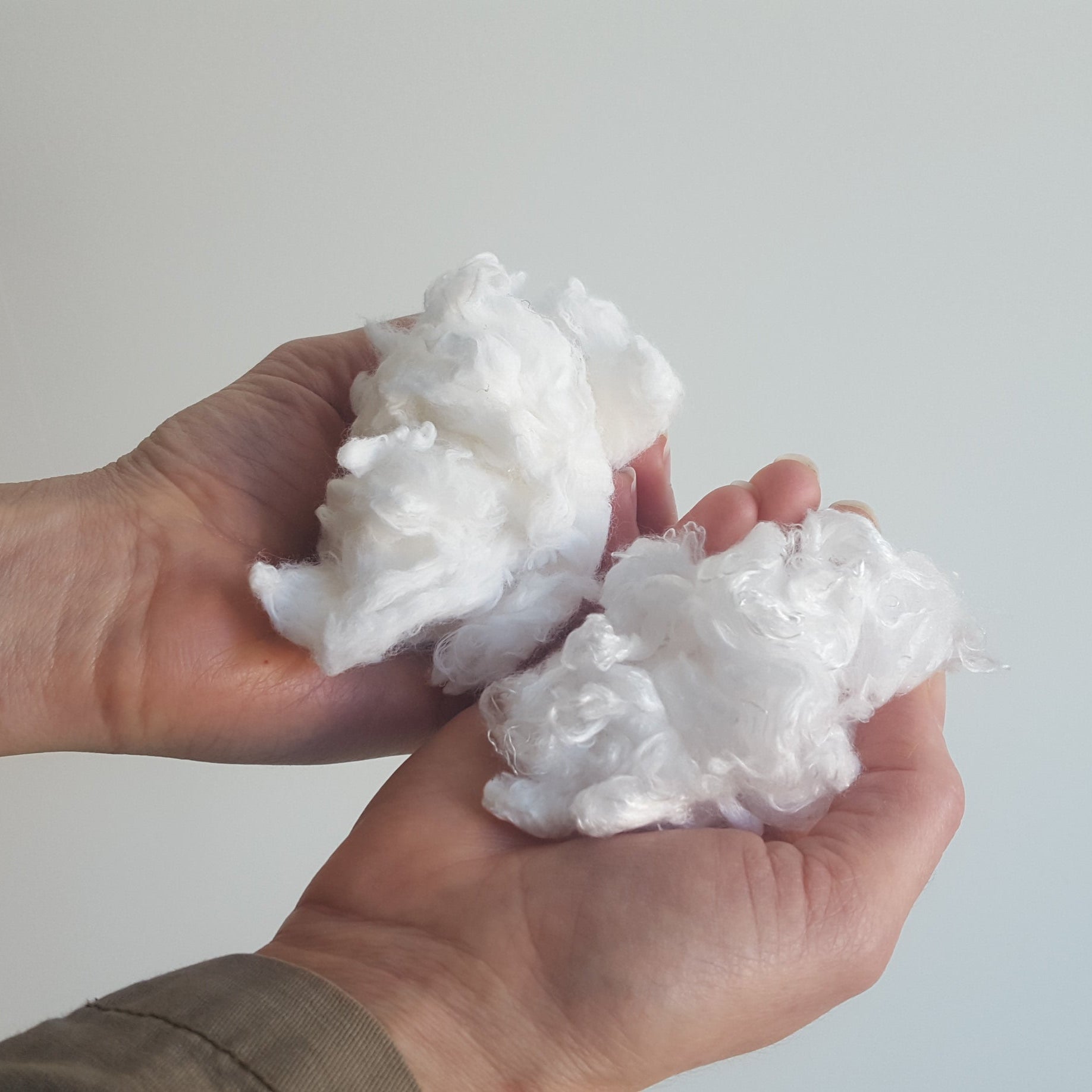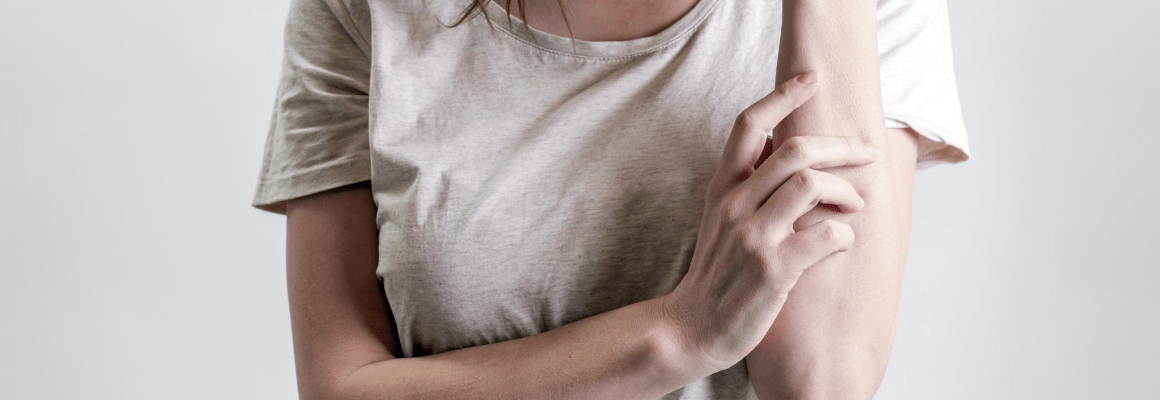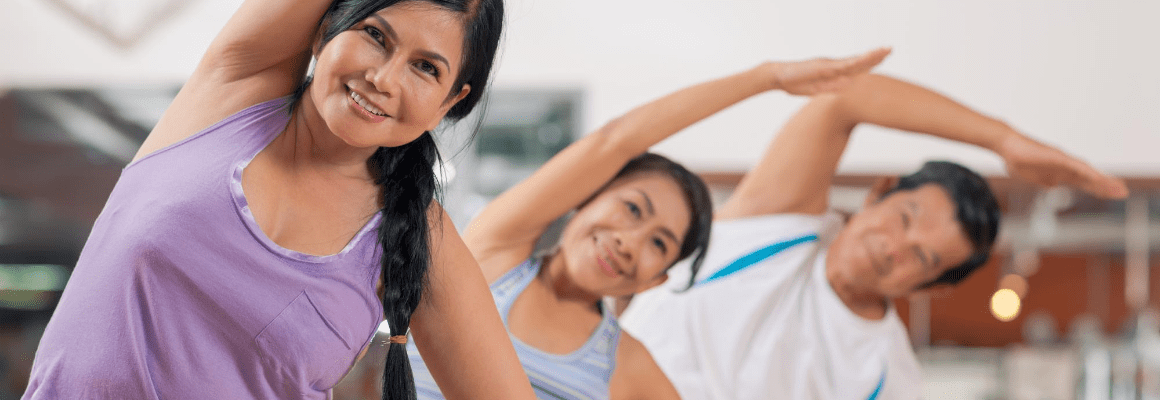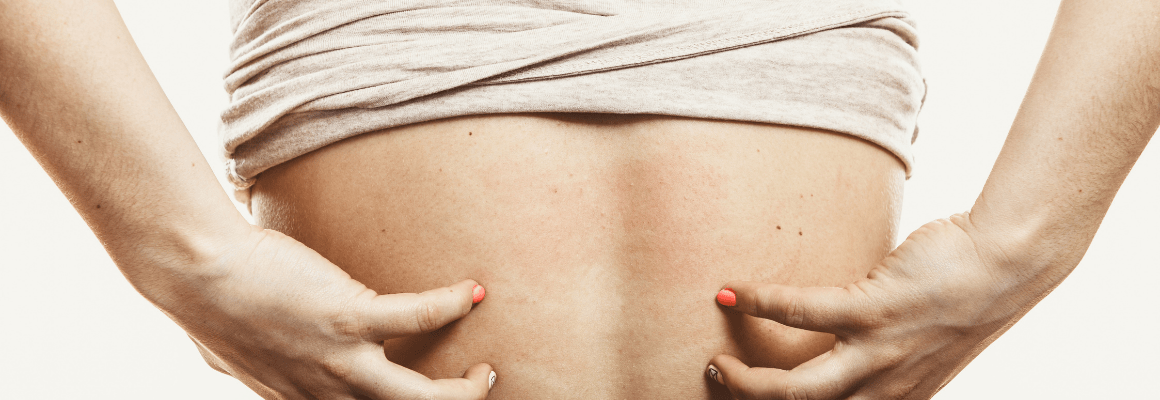Keratosis Pilaris is a common skin condition identified by rough patches and tiny bumps. These goose-like bumps are the reason it’s also known as ‘chicken skin’. While this condition is very common and harmless, there is currently no cure. However, there are plenty of ways you can naturally treat your skin and improve its appearance at home. Read on to discover our best natural treatments for keratosis pilaris.
Keratosis Pilaris Symptoms
Signs and symptoms of keratosis pilaris can include the following:
- Visible red, white, or brown bumps that resemble goosebumps
- Dry patches
- Itchy or irritated skin
- Pinkness around bumps
Most likely, you’ll notice these painless bumps appearing on the upper arms, though you may also find them on the thighs, cheeks or buttocks. Finally, you may notice that symptoms tends to get worse in the winter months when the air is dryer.
What Causes the Condition?
Keratosis Pilaris occurs from a buildup of keratin, a hard protein which is meant to protect the skin from harmful substances, clogging the pores. This blocks the opening of growing hair follicles, resulting in small bumps forming where the hair should be. While researchers aren’t exactly sure what causes the buildup of keratin, it’s believed to be linked to other conditions such as eczema, asthma, and allergies.
Who is Affected by Keratosis Pilaris?
While anyone is susceptible to this condition, keratosis pilaris most commonly affects young people and typically worsens around puberty. The hormonal changes may also cause flare-ups in pregnant women. In some cases, the condition may clear up by the age of 30. Those with lighter skin tones or those who have a higher body weight are also at a higher risk.
Keratosis Pilaris Natural Treatments
Check out the following at-home remedies for improving your skin's appearance and managing symptoms.
Apply a Moisturizing Cream: We love keeping skin hydrated with this Organic Manuka Skin Soothing Cream because it’s sure to moisturize even the driest of skin. Made with six, all-natural ingredients - including Manuka honey! - this creamy, oil-based balm is even gentle enough for babies. No need to worry about any burning or stinging! Applying regularly will help keep the skin properly moisturized and help reduce the itchiness associated with dry skin.
Take Shorter Showers: While hot water may feel relaxing at the moment, hot water can actually have a drying effect on the skin which can exacerbate itchiness. To avoid this, we recommend taking shorter showers or baths and using warm water instead of hot. This will help unclog and loosen pores without stripping the skin of its natural, protective oils.
To avoid irritating your skin from chemicals or toxins, we suggest washing with a natural soap or cleanser. Finally, be sure to pat dry your skin with a towel to avoid aggravating symptoms with unnecessary rubbing. Don’t forget to apply the Organic Manuka Skin Soothing Cream mentioned above as part of your post-shower treatment.
Exfoliate the Skin: There are many benefits to exfoliating the skin such as helping improve the skin’s appearance. This is because exfoliating helps remove dry and dead skin cells. When dealing with sensitive or already-irritated skin, however, the key is to be gentle and not over-exfoliate. Gently use a loofah to remove the dead skin cells. Doing so will help prevent the dead skin cells from blocking the opening of hair follicles and give you better-looking skin.
Resist the Urge to Scratch: As you probably already know, scratching or picking at your skin will only make things worse. That being said, it can be difficult to stop, especially when you have that relentless itch! That’s why we love these protective Remedywear™ gloves, perfect for both adults and kids. Featuring moisture-wicking sweat control, there’s no need to worry about any sweaty irritation or chafing. Feel comfortable wearing them all day or during the night to prevent unknowingly scratching while you sleep. Made with hypoallergenic, latex-free elastane, they truly fit like a second skin.
References:
https://www.webmd.com/skin-problems-and-treatments/keratosis-pilaris#1
https://www.healthline.com/health/keratosis-pilaris
https://www.mayoclinic.org/diseases-conditions/keratosis-pilaris/symptoms-causes/syc-20351149










